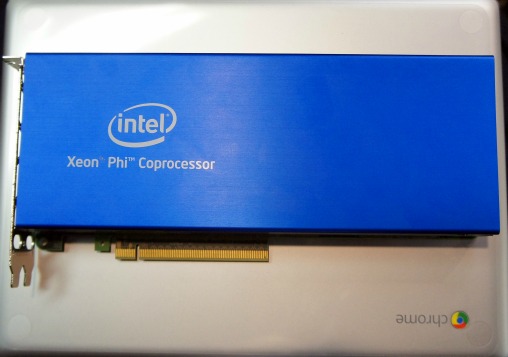The European Union is moving to build a high-performance computing industry to challenge U.S. dominance, but it doesn't want to play catch-up. It wants to leapfrog and it is seeing whether ARM Holdings technology can give it that edge.
The Barcelona Supercomputing Center is using the ARM-based Samsung Exynos 5 Dual processor to build a supercomputer. It's the same processor that's available in Samsung's new $249 Chromebook.
ARM licenses processor designs to chipmakers, and the chip produced by Samsung for the Chromebook is a good first iteration to what the Barcelona center ultimately wants to see in this chip. The initial goal is to build a supercomputer that's just large enough to squeak onto the Top 500 list of the world's most powerful supercomputers by the end of next year. It will serve as a prototype.
"What we want to prove is that one can build an HPC system out of commodity components," said Alex Ramirez, the research manager for this effort known as the Mont-Blanc project.
The advantage of using chips designed for mobile use is their relatively low power. Based on future ARM processor development, the Mont-Blanc project believes it may be possible to build a 200 petaflop system by around 2017 that uses only 10 MW of power.
To put the power usage in perspective, the world's fastest computer, Titan, a Cray system at the Dept. of Energy's Oak Ridge National Laboratory, has a theoretical peak speed of 27 petaflops using 9 MW of power.
Between now and 2017 there will be many new developments that will increase the amount of compute power with less energy. The widely held goal is to build an exascale system -- 1,000 times more powerful than a petaflop system - that uses no more than 20 MW of power.
Ramirez believes ARM processors have the potential of delivering exascale sized computers, if the problems to doing so can be solved. "No one has tried this before," said Ramirez. Mobile processor sockets are designed to be operational by themselves, and not to communicate with other processors, he said.
"So what's going to happen when we put 2,000 of these sockets in a rack?" said Ramirez, who said he they're not sure how the chips will behave, or whether the chips will overheat. "There are a number of unknowns that may actually prevent us from building a high-density solution with them," he said.
The problems of building an exascale computer go well beyond the processor. Vendors and researchers at the supercomputing show here, SC12, are struggling with new ways to speed everything that goes on in systems by improving bandwidth, minimize the movement of data to reduce latency, and improving the resiliency of systems as cores fail.
The Exynos is a 32-bit chip that also includes a GPU. Ramirez is expecting a 64-bit ARM chip in 2014. In the meantime, ARM vendors will also learn more about how their chips may be used by supercomputer builders.
In the race to greener processing, ARM's toughest competition may be from Intel, which topped the latest Green500, released Wednesday. That list named Beacon, a supercomputer at the University of Tennessee and Oak Ridge National Laboratory National Institute for Computational Sciences.
The system, built by Appro which is being acquired by Cray, is using Xeon chips and four of Intel's new Xeon Phi coprocessors per node.
Ramirez knows what he's up against. "We are trying to do something completely different because we're coming from behind," he said. The big IT vendors, Intel, IBM, all "lead on their evolutionary approach. So we had to take a revolutionary approach and do something completely different."

Intel this week released its new high-performance chip, its Xeon Phi co-processor, a 60-core chip that can deliver up to a teraflop of performance. To give you an idea of its size, it is shown here sitting on a Chomebook Samsung 5 550, 12.1-inch model which uses an Intel Celeron processor. The latest Samsung Chromebook model uses the Samsung Exynos ARM processor that the Barcelona Supercomputing Center is deploying in its supercomputer.





